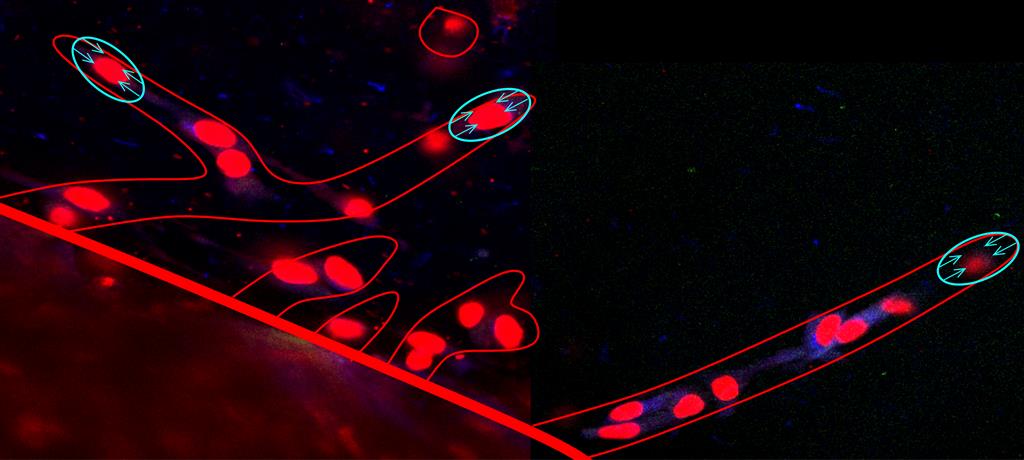Physics and mathematics help understand new blood vessel growth

When new organs form during embryonic development, when a wound heals, or during an inflammatory reaction, new blood vessels form from existing ones. The new vessels supply oxygen and nutrients to the cells, thus ensuring their survival. This process, known as angiogenesis, also occurs in the early or progressive stages of more than 50 diseases, including cancer, rheumatoid arthritis, and diabetes. In fact, in many cases, angiogenesis is a key step in the transition from benign to malignant tumors. Understanding the process, and developing drugs that inhibit angiogenesis, have therefore become important areas of oncology research and therapy.
Now, a team of researchers from the University of Coimbra and the University of Granada (Spain) have used physics and mathematics to explain the mechanism by which cells in nascent vessels move, proliferate and reorganize. Their results pave the way for a new approach to block the growth of new blood vessels by using changes in the physical properties of cells and tissues.
By simulating the growth of new blood vessels under different physical (e.g., stiffness of the surrounding medium) and chemical (concentration of the protein VEGF, which stimulates angiogenesis) conditions, the researchers concluded that in nascent vessels, the cell at the top creates tension that spreads to the cells at the rear. This tension creates a force or empty space behind the top cell, triggering the proliferation of new cells. These occupy the space behind the top cell, the tension decreases, and the process begins again.
Rui Travasso, a researcher from the Physics department at the University of Coimbra, who coordinated the study, emphasizes the multidisciplinary nature of the team, made up of physicists, biomedical engineers, doctors and biologists, "This computational model, was developed from experiments carried out by groups from the Faculty of Medicine at the University of Coimbra, and demonstrated for the first time how the proliferation of the cells that make up the blood vessels must depend on the mechanical stress to which the new vessel is subjected during its growth, and also on the concentration of VEGF, to ensure the functionality of the new vessels."
The study was published in the open access scientific journal PLoS Computational Biologyand was chosen for the cover of the issue.
(Image credits: University of Coimbra)